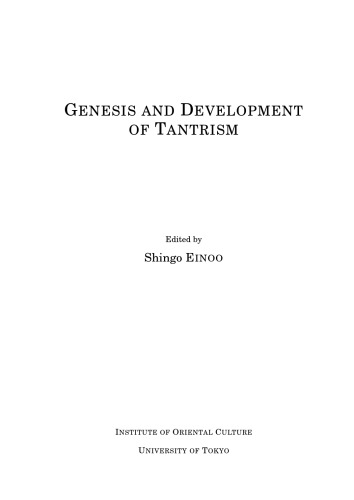

Most ebook files are in PDF format, so you can easily read them using various software such as Foxit Reader or directly on the Google Chrome browser.
Some ebook files are released by publishers in other formats such as .awz, .mobi, .epub, .fb2, etc. You may need to install specific software to read these formats on mobile/PC, such as Calibre.
Please read the tutorial at this link: https://ebookbell.com/faq
We offer FREE conversion to the popular formats you request; however, this may take some time. Therefore, right after payment, please email us, and we will try to provide the service as quickly as possible.
For some exceptional file formats or broken links (if any), please refrain from opening any disputes. Instead, email us first, and we will try to assist within a maximum of 6 hours.
EbookBell Team

4.7
26 reviews
ISBN 13: 9784903235080
Author: Shingo Einoo
The paper examines the transition of Indian rulers from traditional Śrauta sacrifices towards the integration and reinforcement of the brahmanical social order during the early medieval period, coinciding with a growing allegiance to Śaivism and other local religious practices. It discusses royal inscriptions and historical accounts illustrating how kings maintained caste systems while personally engaging with new forms of devotion, particularly towards deities such as Śiva and other local gods, thereby facilitating a unique cultural and religious synthesis in their realms.
Shingo Einoo: From Kamas to Siddhis — Tendencies in the Development of Ritual towards Tantrism
Alexis Sanderson: The Śaiva Age — The Rise and Dominance of Śaivism during the Early Medieval Period
The Dominance of Śaivism
The Incorporation of Śaktism
The Etiolation and Subsumption of the Cult of the Sun-God
The Decline of Vaiṣṇavism and the Rise of the Tantric Pañcarātra Following Śaiva Models
Royal Patronage of Buddhism
The Viṣṇukuṇḍins of Andhra
The Maitrakas of Valabhī
The Kārkoṭas of Kashmir
The Licchavis of Nepal
The Thākurī Kings of Nepal
The Bhauma-Karas of Orissa
The Candras of South-East Bengal
The Khadgas of Samataṭa
The Candras of Arakan and Other Buddhist Kings of Eastern India
The Pāla Emperors and the Great Monasteries of Eastern India
The Pālas’ Engagement with Śaivism
Buddhist Kings of Eastern India and their Commitment to Brahmanism
Joint Patronage of Buddhism and Śaivism in the Kingdoms of the Khmers, Chams, and Javanese
The Development of Tantric Buddhism Through the Adoption and Adaptation of Śaiva and Śākta Śaiva Models
The Parallel Repertoire of Rituals
Mahāvairocanābhisaṃbodhi, Mañjuśriyāmūlakalpa, and Buddhaguhya
Sarvatathāgatatattvasaṃgraha and the First Inroads of Śākta Śaivism: Possession, Goddesses, and the Sacralization of Sex
Guhyasamāja: Copulating Deities, Sexual Initiation Rites, and the Sacralization of Impurity
Sarvabuddhasamāyogadākinījālaśaṃvara: Heruka and his Yoginīs, Kāpālika Iconography, the Gaṇamaṇḍalam, and the Beginning of Śaiva–Buddhist Intertextuality
The Yoginītantras and the Full Appropriation of Vidyāpīṭha Śaivism
Chronology and Provenance
Saṃvara/Vajrarudra and Vajravārāhī: The Transformation of Bhairava and his Consort
The Rise of the Goddess to Independence
The Adoption of the Vidyāpīṭha’s Caryā and Yoga
Incorporation of Text-Passages from the Vidyāpīṭha
Converting the Outsiders
The Reflux of Buddhist Śāktism into the Śāktism of Bengal
The Jains’ Adaptation of the Śaiva Mantraśāstra
Śaivism in the Brahmanical Substrate
The Causes of the Dominance of Śaivism
The Early Medieval Process
Śaivism and Monarchy
Śaivism and the Royal Temple
Śaivism and New Settlements
Śaivism and Irrigation
Śaivism and Social Integration
The Śaiva-Brahmanical Order
Abbreviations
References
Conventions in the Footnotes
alexis sanderson the saiva age
ending the saiva age
the saiva age sanderson
the savii family
savi age
slavi the clashers age
where was jesus between ages 12 and 30
Tags: Shingo Einoo, Dominance, Age